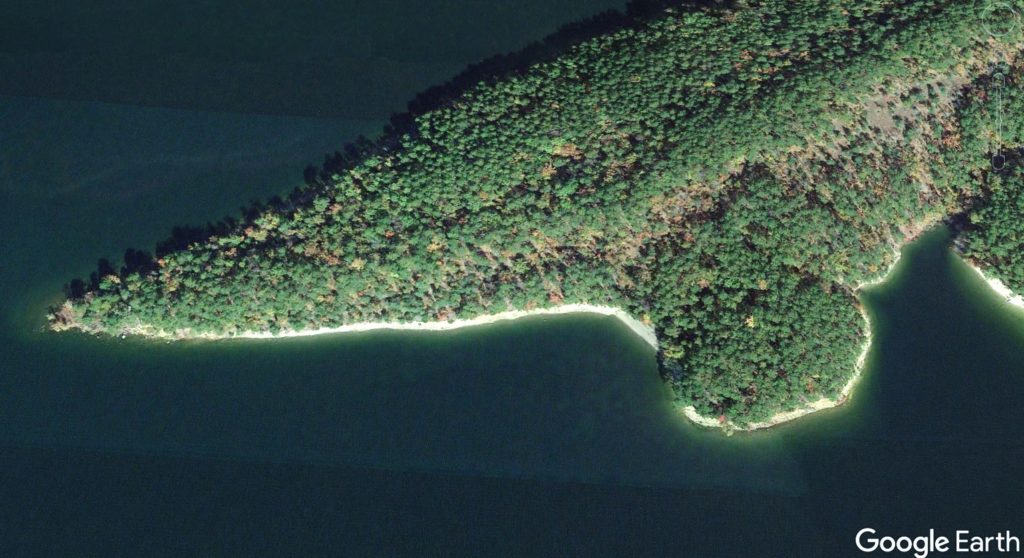
Petroleum Systems of Fold and Thrust Belts
Course Details
The Arbuckle Uplift is a unique study area with a complex geologic past consisting of Precambrian rifting followed by Pennsylvanian inversion and uplift. This field course offers participants a chance to study the structures of the thick-skin Arbuckle Uplift followed by several days in the thin-skin Ouachita Fold and Thrust Belt. We will also have the opportunity to see strike-slip deformation associated with the Arbuckle Uplift and learn how an evolving stress field can lead to multiple structural styles in an area that underwent multiple tectonic events.
Some of the concepts taught include: thick-skin vs thin-skin deformation; flexural slip vs flexural flow; fault bend folds, fault propagation folds, and faulted detachment folds; the impact of mechanical stratigraphy on structural styles; the impact of pre-existing structures and stress; damage zones around faults; fold accommodation faults; and much more. Participants are encouraged to ask questions, take notes, and will be given several exercises to help grasp these concepts.
This field area also provides a great opportunity to study fractures and how they can be used as kinematics indicators for paleostress conditions. In the field, we will look at different fracture types and the implications to stress, mechanical stratigraphy, and faulting. We will also look at cross-cutting relationships when multiple fracture sets are present to decipher the sequence of events and tectonic evolution of a structure.
Rocks at the surface include the Precambrian basement, Cambrian rhyolite from the rifting stage, Ordovician through Mississippian pre-tectonic carbonates and clastics, as well as syn-tectonic Pennsylvanian clastics. Participants will have the opportunity to see the role of mechanical stratigraphy on the structural styles that resulted.
On the last day, the attendees will take a boat trip around Lake Ouachita where we will dock at several locations to look at unique fracture sets, overturned folds, and faults. At the end of the boat trip, participants will have the opportunity to hunt for graptolite fossils in the Womble Shale.
Discussions will be held on not only understanding the structural styles of contraction but will also include topics on petroleum systems elements such as trapping styles, timing, and migration into traps, and proper seals. Small-scale structures seen in outcrop will be compared to analog fields in the adjacent Anadarko and Ardmore Basins, as well as to field all over the world that underwent similar tectonic events with similar structural styles.
Who Should Attend
• Geologists • Geophysicists
• Petrophysicists
• Engineers
This course is meant for those making structural interpretations in seismic data, constructing regional tectonic models, and working in systems that underwent multiple tectonic events. Events include rift faulting, fold, and thrust belts, and strike-slip systems that develop within these types of systems. Structural models can be crucial for exploration and development. This course will provide participants with multiple models and analogs that can be applied back at the office.
Need more information?
Course Outline
Day 1
- You will be arriving the day before the course starts in Oklahoma City, Ok, USA. The next morning, we will begin with a safety briefing, then drive to the field area.
- We will begin the field trip at the Turner Falls overlook with an overview to the Arbuckle Mountains.
- Intense fracturing and vertical stylolites will be observed in the Arbuckle Formation along the Washita Valley Fault
- After lunch, we will conduct a fracture exercise in the overturned Woodford Shale.
- The rest of the day will be spent making several stops along I-35 viewing the Washita Valley Fault and contractional fault-propagation folds.

Day 2
- We will start the day by looking at fractures and contractional structures in shale and carbonates at a quarry.
- Participants will map a small-scale fold accommodation fault.
- After lunch we will view several more contractional structures along I-35.
- We will end the day by observing several kinematic indicators of strike-slip faulting along the Washita Valley Fault.

Day 3
- We will start the day by mapping out a plunging anticline and looking at fractures and secondary faulting including both strike-slip and thrust faulting
- Afterwards we will hike another quarry nearby where we will stop for lunch and observe more contractional structures
- LUNCH BREAK
- After lunch, we will make our way towards the east and look at several Precambrian basement structures that set the foundation and impacted later Pennsylvanian tectonics.

Day 4
- We will make our way through the Ouachita Mountains looking at contractional structures and begin comparing to what we saw in the Arbuckle Mountains.
- As we make our way towards Hot Springs we will stop and look at several fault and fold structures within syn-tectonic Pennsylvanian stratigraphy.

Day 5
- We will aboard a boat to explore the structures around Lake Ouachita.
- Viewing of fractures and shear zones in sandstone
- Faulted recumbent folds and thrust faults
- Joints and igneous dikes
- Fossil hunting for graptolites

This field trip is available upon request. The field trip is $6500/person and this cost includes all hotels, meals, transportation, national park passes, permits, field guide, exercise materials, and tuition. Group discounts are available if your company decides to send 3 or more participants.
Visas for the US typically take 1-2 months to process therefore we recommend contacting us as soon as possible so we can send you a letter of invitation that you can take to your local US consulate.


